In this blog post I will break down everything you need to know about canvas wall art.
I will first provide a quick overview of the development of stretched canvas, then I will discuss three advantages of canvas wall art, and finally, I will describe the various ways to order canvas prints, such as gallery wrapped canvas, framed canvas, and triptychs.
Timeless and Classic
Canvas is incredibly adaptable and may be used to produce everything from authentic oil paintings to superb reproductions of both paintings and photographic prints. It goes well with a wide range of interior design aesthetics, including modern, vintage, and everything in between.
From its inception in the 1400s to the present, canvas wall art has stood the test of time. During the Italian Renaissance in the 16th century, stretched canvas replaced other painting surfaces as the primary choice for traditional oil artists. The medium was popular among Italian and French painters for a number of reasons, and these same advantages continue to make it so today.
While face-mounted art prints made of aluminum or acrylic are perhaps more appropriate for contemporary décor, classic stretched canvas art has endured through the ages as the style that will never go away.

Canvas print of Behold
Benefits of Canvas Art
#1 Budget Friendly
In the sixteenth century, sails for sailboats were made from canvas, a tightly woven hemp fiber. The material was inexpensive and simple for painters to find. The majority of canvases created nowadays are composed of woven cotton, another readily available material, however some huge canvases are made of (more expensive) linen.
Stretched canvas is one of the most economical options when it comes to buying art because a frame is not necessary. The average cost becomes comparable to framed fine art paper prints when a frame is added.

Canvas print of Golden Hour at Layou River II
#2 Quality and Longevity
In the 16th century, Venetian artists sought to develop a material that could withstand their humid surroundings and would not warp, sag, or shrink with time. Canvas once more for the win! Because the fibers may be stretched tightly, warping and shrinking are far less likely. On a big scale, that could still be a problem, but for the most part, it is no longer a problem.
Canvas prints are a very high quality media option today thanks to inkjet printing, whether you want a tiny 12" x 18" print or a gigantic 72" x 48" print.
Moreover, high-quality canvas prints have excellent archival qualities and frequently have lifespans of more than 100 years. Several fine canvas art prints have a UV protecting finish on them, and as an added plus, they are inherently glare resistant. UV-protected canvas is a great choice if your wall is facing a window or receives a lot of natural light.
Related: How to Make Your House Feel Life a Home
#3 Versatility
In terms of subject matter, canvas is suitable for virtually all types - abstract, landscape, seascapes, cityscapes, macro, portraits, and the list goes on. Canvas is equally suited for images with low detail as well as highly detailed scenes. In fact, I have had collectors tell me that the prints make them feel like they can walk right into the scene!

Canvas print of The Ghost
Different Ways to Order Canvas Prints
There are three primary ways to order canvas wall art - wrapped canvas, framed canvas, or as a triptych. Each of those options begins with the canvas print being stretched over stretcher bars.
Wrapped Canvas
Once the canvas is stretched, you are done and the print is ready to hang! This is the most cost-effective choice, and it's the standard print option for my prints. The term “gallery wrapped” refers to the method of stretching the canvas all the way over the stretcher bars and securing it on the back of the piece so that the edges are not exposed once hung. It is a classic and polished look.
Framed Canvas
Another option is to add a “float” frame. The frame is attached to the back of the stretched canvas, leaving a narrow gap all the way around the front of the artwork, which creates the subtle illusion like the canvas is floating within the frame. The addition of a frame can transform the piece to complement a variety of décor styles: contemporary, vintage, rustic, modern, eclectic.
Related: 4 Ways to Create Calm with Art

Framed canvas print of Exquisite Emerald Pool
Triptychs
This option is only available for certain images and it's a custom request. Ordering the stretched canvas as a triptych divides the image into three equal pieces. This covers a large wall with ease, adds interest and is very popular with abstract art.
If you're interested in getting a triptych of one of my images, please let me know. I'd be happy to look into the possibilities for you.
Here's what a triptych looks like (not my photo):

What are your thoughts about canvas artwork? Let me know in the comments below.
Related: Your Art Buying Guide





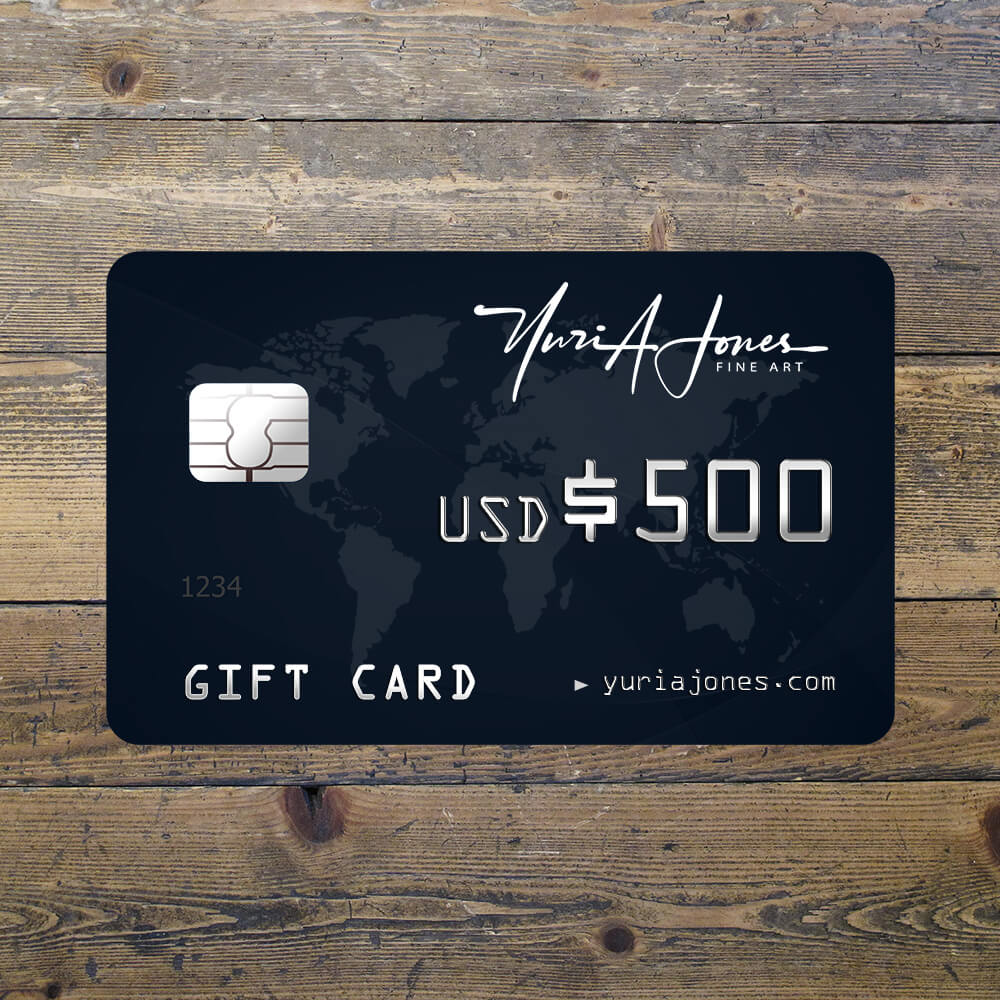






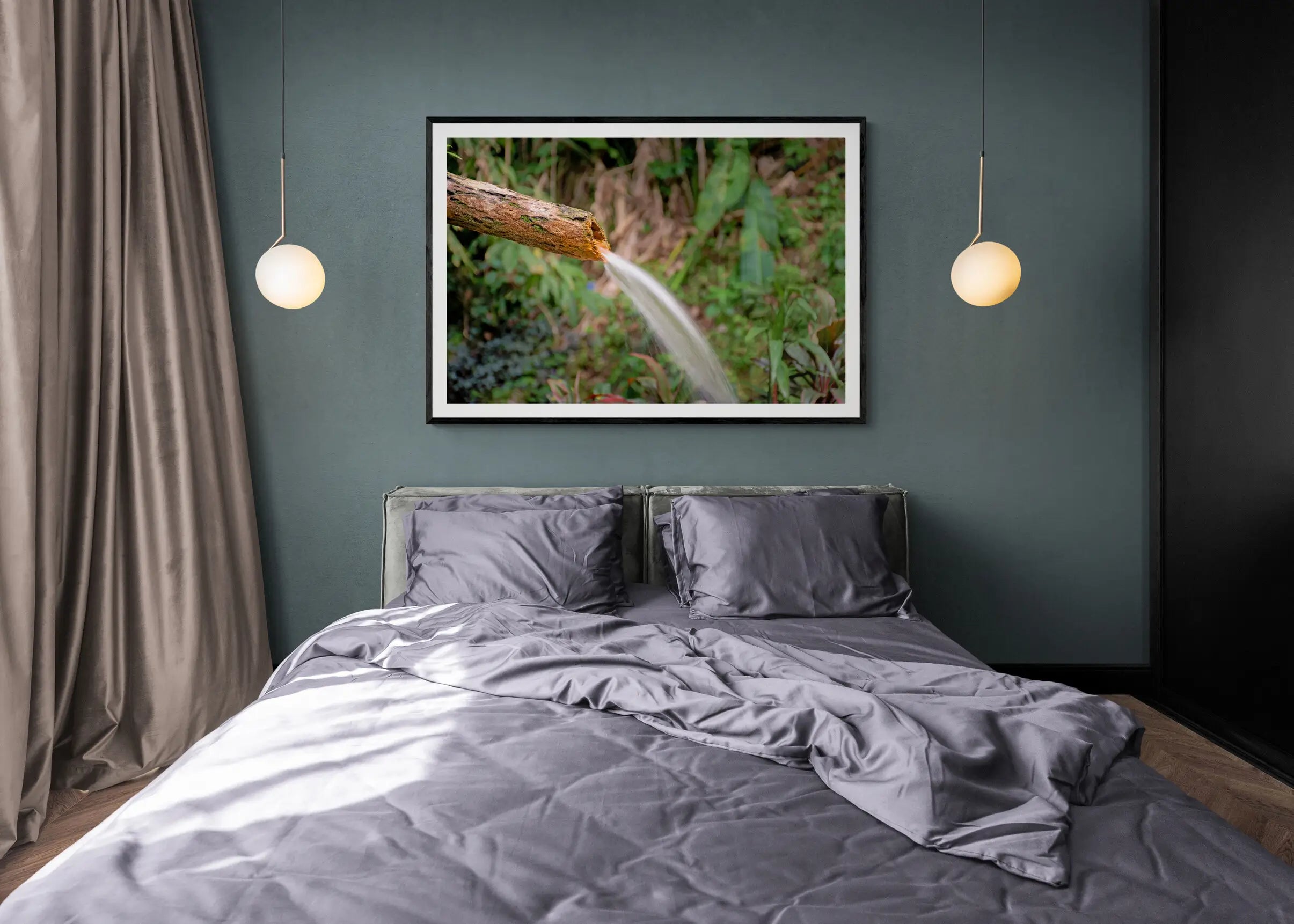
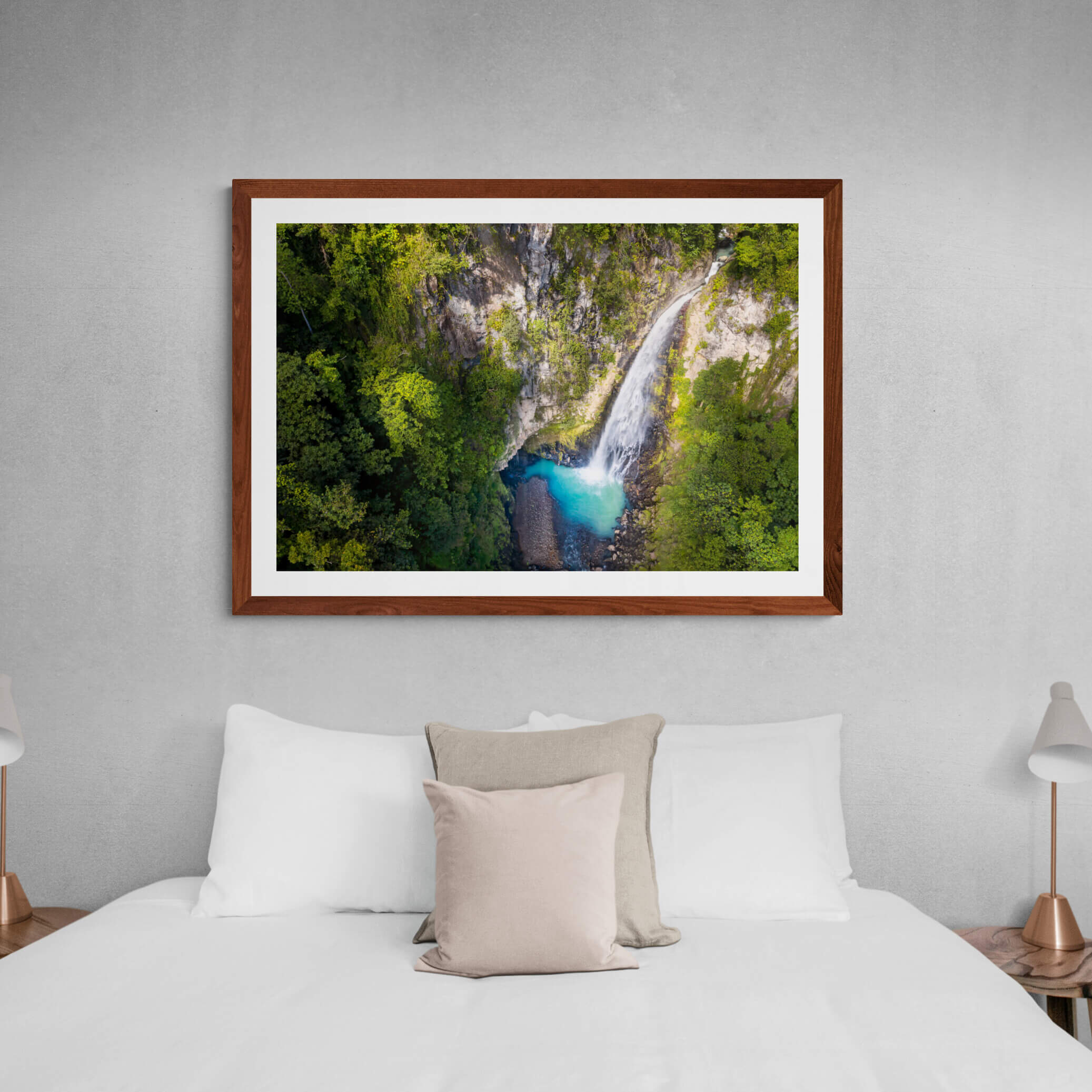
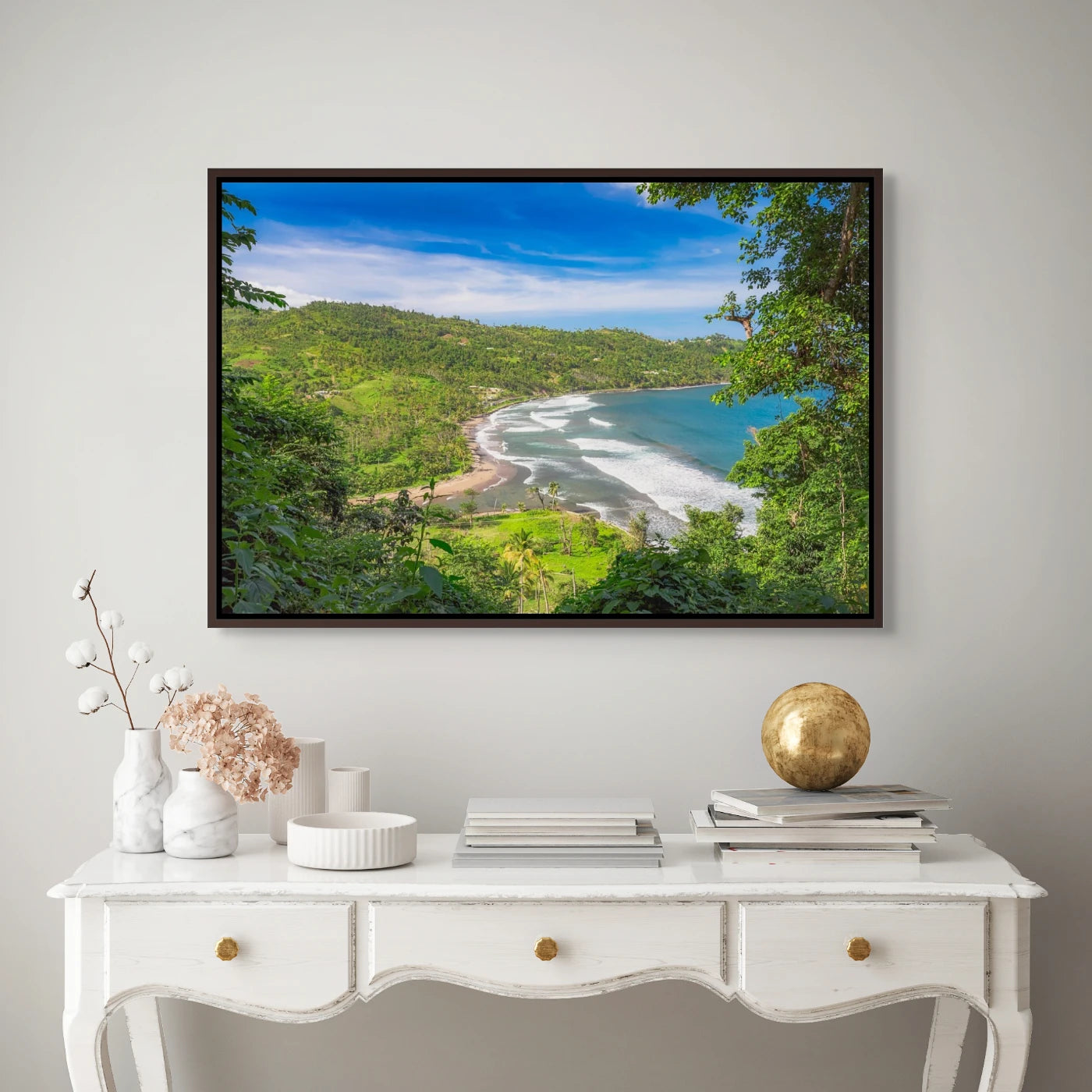
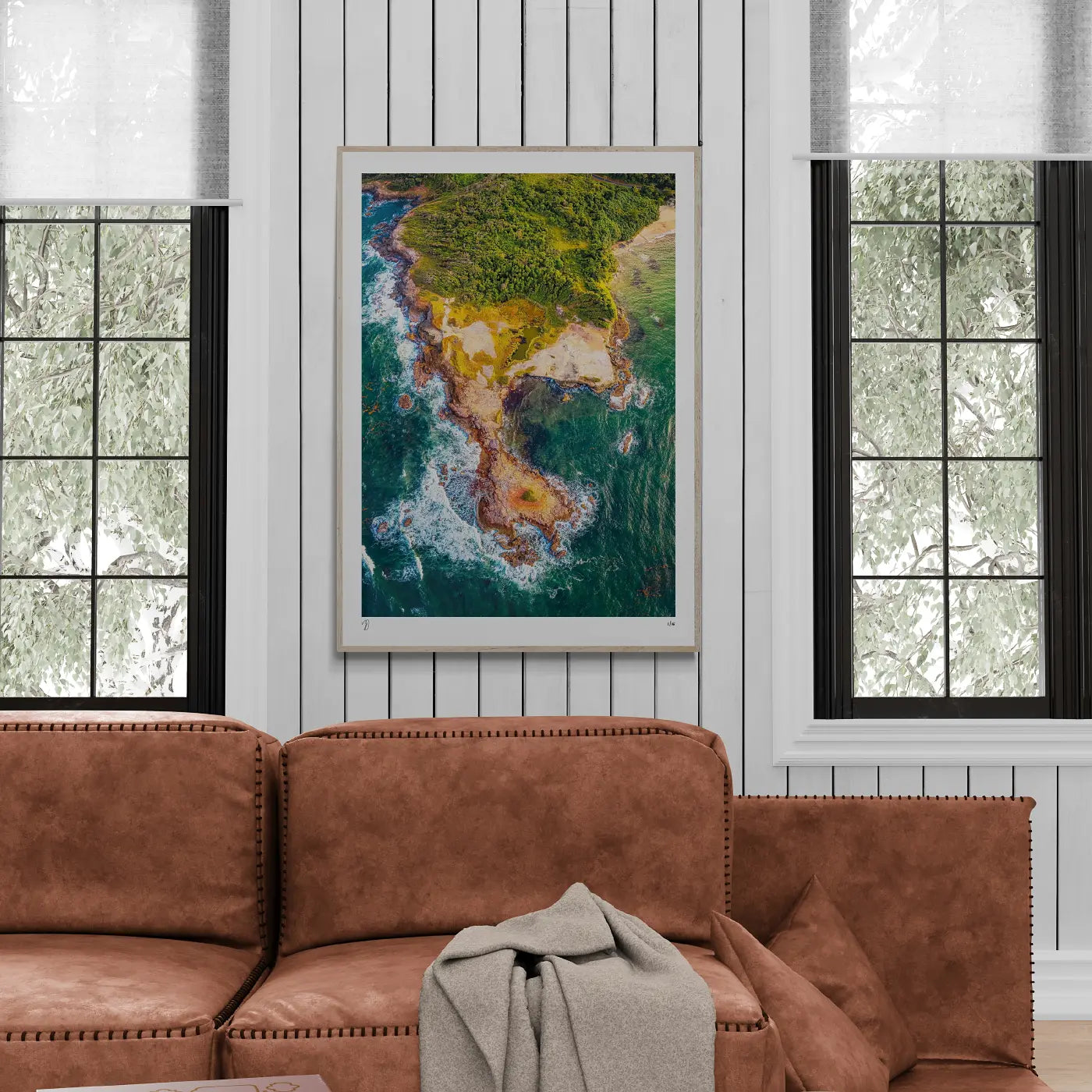

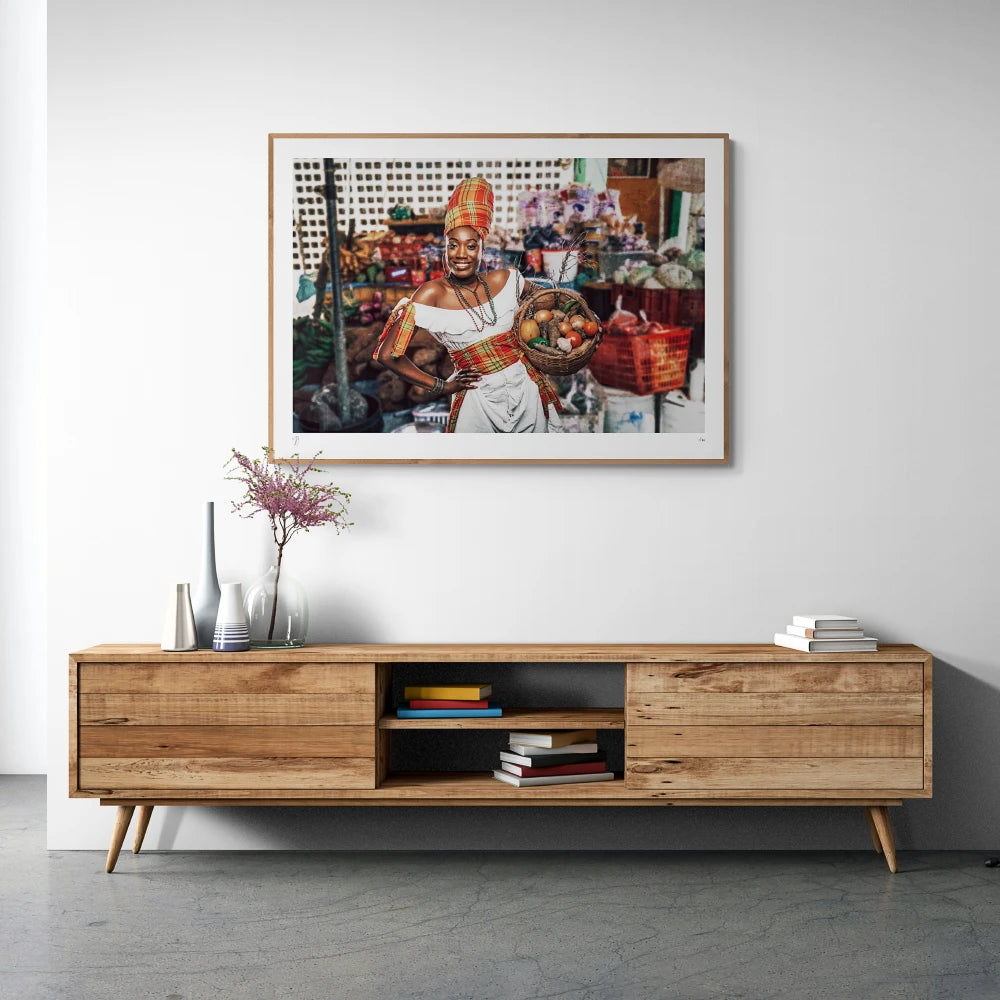





1 comment
Adam Zampa
Wonderful printing canvases. I want to buy this wonderful canvas. How do I buy? https://jadeandjemina.com/
Leave a comment
All comments are moderated before being published.
This site is protected by hCaptcha and the hCaptcha Privacy Policy and Terms of Service apply.